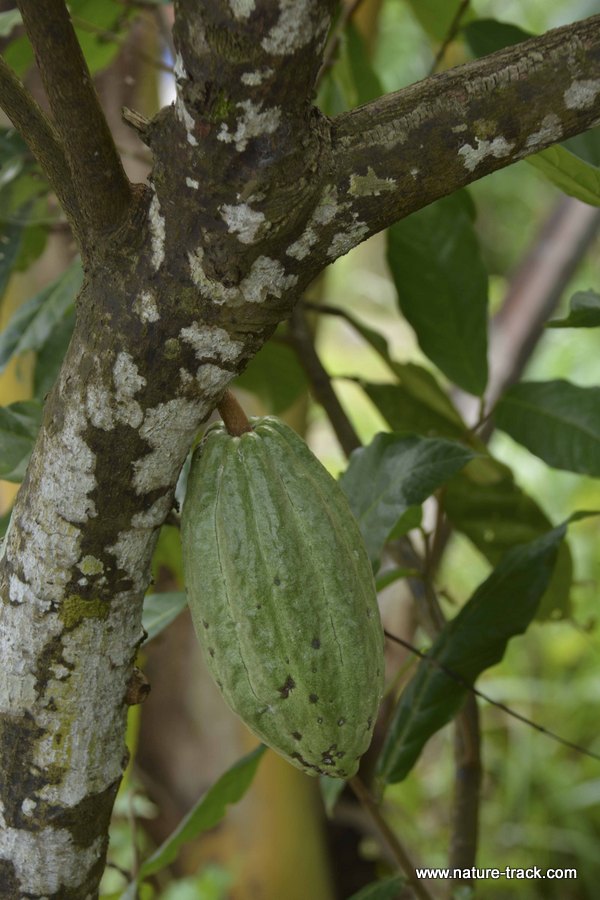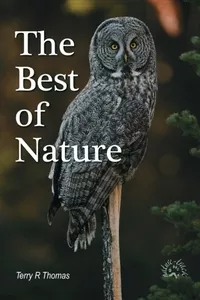Lessons from Chocolate

This is the pod of the cocoa tree and is the beginning of a chocolate treat. However, there are many steps involved before a bitter cocoa bean becomes delectable chocolate.
I will never forget the first time (and the last time) I sampled unsweetened baking chocolate. It seemed like a good idea. After all, it looked like chocolate and smelled like chocolate. Surely it would be delicious, otherwise why would mother keep it in her baking supplies?
The taste of the spoonful of bitter powder bore no resemblance to the sweet creamy treat I was thinking of and had me spitting in the sink. It was apparent that, although chocolate has been pleasing palates for at least 3,000 years, in its natural form it bears little resemblance to the heavenly indulgence it can become.
When I stepped beneath a cocoa tree in Indonesia, I was struck by two things: first, this wasn’t its natural home. The tree is native to Central and South America but is now grown in equatorial climates around the world. Second, this small tree thrives under the shade and protection of the jungle canopy. Many species crave the spotlight of the sun and are in a perpetual competition for its rays. Cocoa trees never see the spotlight but produce one of the most sought after commodities in the world.
Over 75 percent of the chocolate produced in the world comes from small ecologically sustainable family farms, many under 10 acres. Like with recycling, they prove that the combined small actions of many can make a difference.
It is the transformation from cocoa bean to chocolate that is the real magic, worthy of a Christmas tale. Without considerable refinement, a cocoa bean is just another seed.
The cocoa beans are secreted in football-shaped pods about eight inches long. The 50-60 beans are extremely bitter but are wrapped in a sweet pulp that must be fermented to develop the classic chocolate flavor of the beans.
Once fermentation is complete, the beans are dried and ground and can be made into a drink. This is essentially what Europeans first tasted in the 1500’s. Sugar improved the taste but it wasn’t until 1815 that most of the bitterness was resolved by the addition of alkaline salts. Then the same Dutch chemist found how to remove about half the cocoa butter from the chocolate liquor and improved quality. But it wasn’t until 1847 that Joseph Fry discovered how to make solid chocolate as we know it today.
Even then, chocolate requires refining. Sugar is added and sometimes milk products (milk chocolate) as well. The chocolate is subjected to conching. In this process, the liquid chocolate is crushed by swirling steel balls that smoothes the texture. Finer chocolates are conched for up to a week. Chocolate also must undergo tempering, a very closely controlled melting and hardening procedure needed to achieve the appropriate crystalline structure and avoid a pale surface bloom of oils and sugars.
If chocolate, that most delectable of treats, requires this much refinement to make it fit for our tables, it should be no surprise that humans don’t start out life perfect either. We all need refining and more than a little sugar to make us palatable. As we devour chocolate during the holidays, perhaps it will remind us to be a little more patient and charitable with the chaos that seems to surround the season.
Wildlife License Plates
Great news! as of 2024, there are three NEW designs for license plates. They still are bluebird, cutthroat trout and elk, but they are beautiful.
Idaho Wildlife license plates provide essential funding that benefits the great diversity of native plants and wildlife that are not hunted, fished or trapped—over 10,000 species or 98% of Idaho’s species diversity. Game species that share the same habitats (such as elk, deer, antelope, sage-grouse, salmon, trout) also benefit from these specialty plates.
No state tax dollars are provided for wildlife diversity, conservation education and recreation programs. Neither are any revenues from the sale of hunting or fishing licenses spent on nongame species. Instead, these species depend on direct donations, federal grants, fundraising initiatives—and the Idaho Wildlife license plates.
Both my vehicles have Bluebird Plates. I prefer the bluebird because the nongame program gets 70 percent of the money from bluebird plates, but only 60 percent of the money from elk and trout plates - 10 percent of the money from elk plates supports wildlife disease monitoring and testing programs (to benefit the livestock industry) and 10 percent from cutthroat plates supports non-motorized boat access.
Incidentally, in 2014, the Idaho Legislature denied the Department of Fish and Game the ability to add new plates or even to change the name of the elk and cutthroat plates (very specific) to wildlife and fish plates, a move that would have allowed for changing images occasionally and generating more revenue. It would seem that they believe that we Idahoans don't want a well funded wildlife program.
I think it is time we let the Legislature know that Idahoan support wildlife funding and that we would like to see these generic plates come to fruition.

"WOW. What a phenomenal piece you wrote. You are amazing." Jennifer Jackson
That is embarrassing, but actually a fairly typical response to my nature essays. Since The Best of Nature is created from the very best of 16 years of these nature essays published weekly in the Idaho Falls Post Register (online readership 70,000), it is a fine read. It covers a wide variety of topics including humorous glimpses of nature, philosophy, natural history, and conservation. Readers praise the style, breadth of subject matter and my ability to communicate complex and emotional topics in a relaxed and understandable manner.
Everyone can find something to love in this book. From teenagers to octogenarians, from the coffee shop to the school room, these nature essays are widely read and enjoyed.
Some of the essays here are my personal favorites, others seemed to strike a chord with readers. Most have an important message or lesson that will resonate with you. They are written with a goal to simultaneously entertain and educate about the wonderful workings of nature. Some will make you laugh out loud and others will bring a tear to the eye and warm your heart.
Readers Write:
"You hit a home run with your article on, Big Questions in Nature. It should be required reading for everyone who has lost touch with nature...great job!" Joe Chapman
"We enjoyed your column, Bloom Where Planted. Some of the best writing yet. The Post Register is fortunate to have your weekly columns." Lou Griffin.
To read more and to order a copy, click here or get the Kindle version
Copies are also available at:
Post Register
Island Park Builders Supply (upstairs)
Barnes and Noble in Idaho Falls
Harriman State Park, Island Park
Museum of Idaho
Valley Books, Jackson Wyoming
Avocet Corner Bookstore, Bear River National Wildlife Refuge, Brigham City, Utah
Craters of the Moon National Monument Bookstore, Arco, Idaho